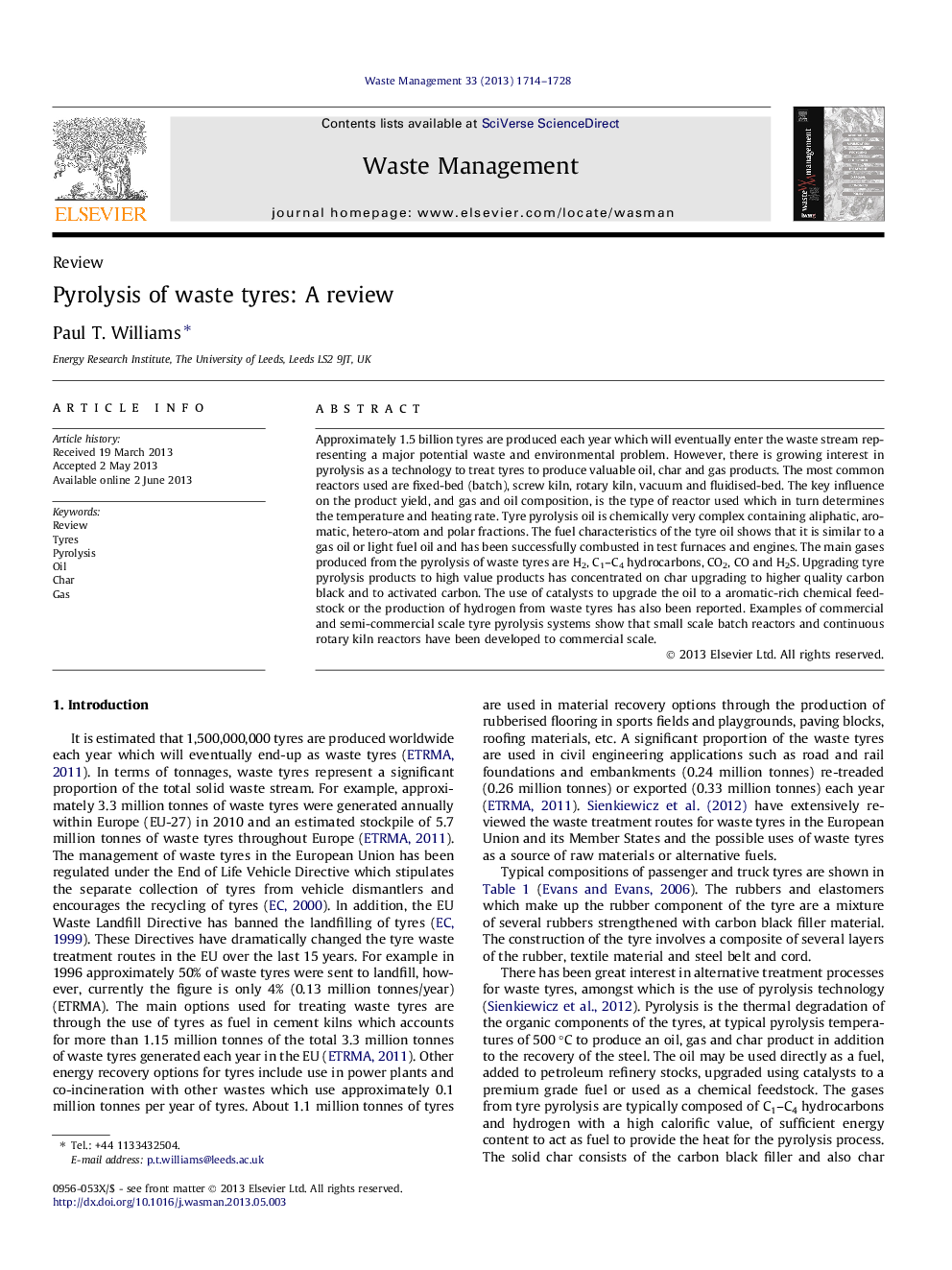| کد مقاله | کد نشریه | سال انتشار | مقاله انگلیسی | نسخه تمام متن |
|---|---|---|---|---|
| 4471777 | 1315043 | 2013 | 15 صفحه PDF | دانلود رایگان |

• Pyrolysis of waste tyres produces oil, gas and char, and recovered steel.
• Batch, screw kiln, rotary kiln, vacuum and fluidised-bed are main reactor types.
• Product yields are influenced by reactor type, temperature and heating rate.
• Pyrolysis oils are complex and can be used as chemical feedstock or fuel.
• Research into higher value products from the tyre pyrolysis process is reviewed.
Approximately 1.5 billion tyres are produced each year which will eventually enter the waste stream representing a major potential waste and environmental problem. However, there is growing interest in pyrolysis as a technology to treat tyres to produce valuable oil, char and gas products. The most common reactors used are fixed-bed (batch), screw kiln, rotary kiln, vacuum and fluidised-bed. The key influence on the product yield, and gas and oil composition, is the type of reactor used which in turn determines the temperature and heating rate. Tyre pyrolysis oil is chemically very complex containing aliphatic, aromatic, hetero-atom and polar fractions. The fuel characteristics of the tyre oil shows that it is similar to a gas oil or light fuel oil and has been successfully combusted in test furnaces and engines. The main gases produced from the pyrolysis of waste tyres are H2, C1–C4 hydrocarbons, CO2, CO and H2S. Upgrading tyre pyrolysis products to high value products has concentrated on char upgrading to higher quality carbon black and to activated carbon. The use of catalysts to upgrade the oil to a aromatic-rich chemical feedstock or the production of hydrogen from waste tyres has also been reported. Examples of commercial and semi-commercial scale tyre pyrolysis systems show that small scale batch reactors and continuous rotary kiln reactors have been developed to commercial scale.
Figure optionsDownload as PowerPoint slide
Journal: Waste Management - Volume 33, Issue 8, August 2013, Pages 1714–1728